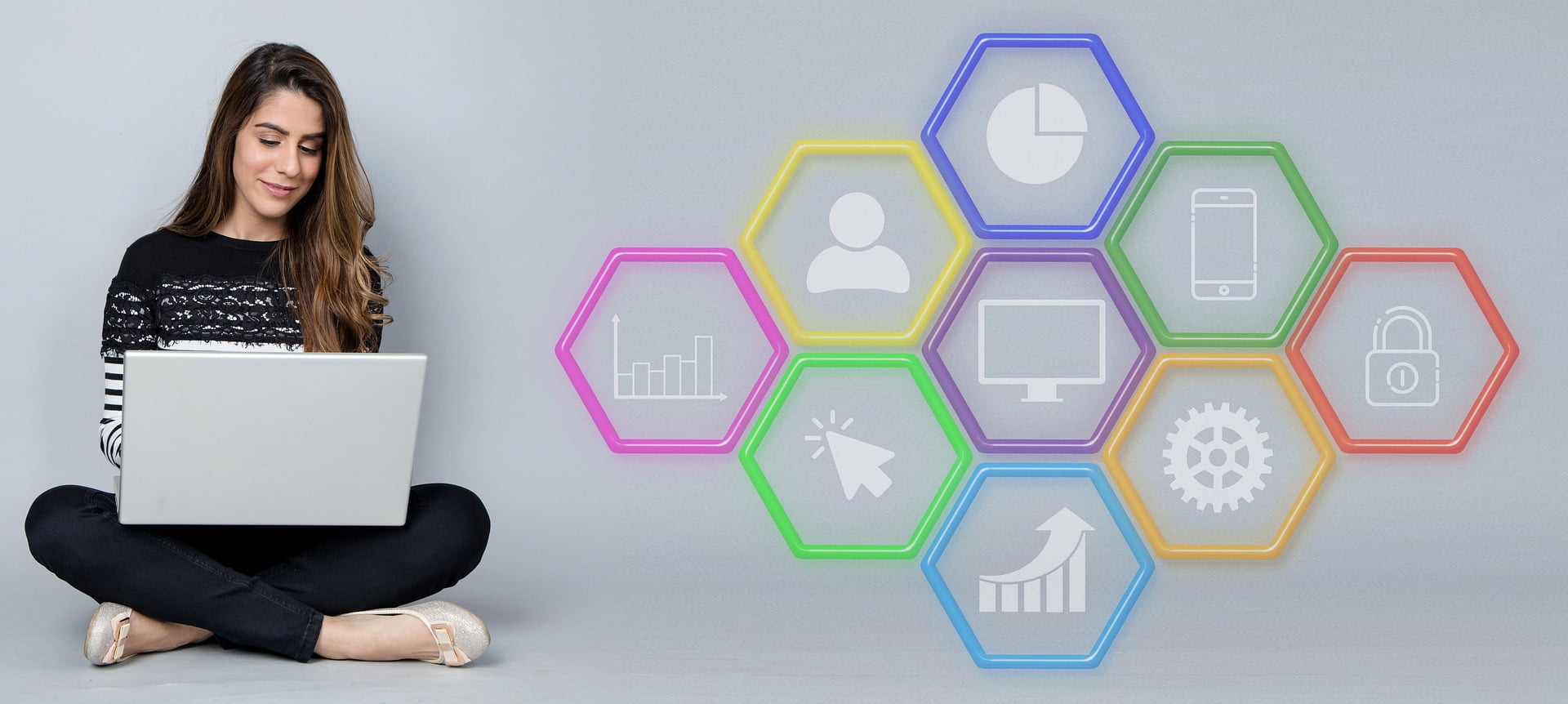How can you deliver quality support, retain existing customers, and expand your customer reach without measuring customer support performance and identifying areas for improvement? You can’t, at least not to the optimal level that today’s customers expect.
Helpdesk metrics are essential tools that measure the performance of a support team. By analyzing these metrics, businesses can identify areas where the team is excelling and areas where improvements are needed. Additionally, help desk metrics can help companies track their customers’ overall satisfaction with the support team.
There are a variety of help desk metrics that businesses can track, but probably the most important metrics include:
First contact resolution rate: This metric measures the percentage of support issues that are resolved on the first contact with the help desk. A high first contact resolution rate indicates that the support team is efficient and knowledgeable.
Average handle time: This metric measures the average time it takes for a support agent to resolve an issue. A shorter average handle time indicates that the team is efficient and effective.
Customer satisfaction score: This metric measures customers’ overall satisfaction with the support team. A high customer satisfaction score indicates that the team is meeting the needs of its customers.
These are not the only ones that are a must-have to measure the support team’s performance. We will explore the various metrics in detail in this article. But first, let us understand what constitutes help desk metrics and why they are essential to business success.
What are helpdesk metrics?
Help desk metrics are used to gauge user satisfaction and track the effectiveness of your customer support initiatives. With the help of these measurements, you can enhance your strategy and effectively allocate resources to provide better customer service.
Help desk metrics are key performance indicators (KPIs) that help organizations track and measure the effectiveness of their help desk operations. Standard metrics include average ticket resolution time, first contact resolution rate, and customer satisfaction score. KPIs are a metric that help organizations track progress toward specific goals.

What makes help desk metrics important?
Help desk services generate a lot of data that will need to be analyzed. Such analytics and help desk metrics can help increase transparency, streamline performance reporting and management, identify opportunities for improvement, and reveal common problems. Additionally,
- They can help you identify areas where your team needs improvement.
- They can help you track progress over time and identify trends.
- They can help you justify your budget and staffing levels to upper management.
Here’s a list of help desk metrics you can leverage
Ticket volume
Your business’s number of support tickets refers to the ticket volume. This information lets you know how many support agents you need to handle the requests. This metric is vital in planning staff activities and helps you understand how much time is required to support each customer.
Ticket volume categorized by channel.
Measuring how many tickets are coming and going will not suffice; you need to understand where they come from. If you get more tickets from email rather than social media, you can focus on training your team to handle email tickets or educate your users about other options.
Opened vs. closed support tickets
The number of support tickets opened and closed by your staff is an important metric to measure your progress at your service desk. Ideally, the number of tickets opened should be parallel to the number of tickets solved. You can calculate the % of tickets that remain open at the end of each day/ week/ month, etc.
Distribution of tickets
If you are using customer service software, adding category tags to your tickets is useful. Doing this allows you to monitor the service tickets to operate requests faster and remove any blockages in ticket routing operations. You need to analyze this reporting metric regularly to see which categories are receiving more tickets and evaluate how they are distributed.
Response time
Response time is how long it takes for a help desk to resolve an issue. This metric is important because it can help identify areas where the help desk needs to improve its efficiency. The longer the first or average time it takes to respond, the more the risk to customer satisfaction. Customers would like to know that their issue is acknowledged at the very least. Having a shorter response time while offering consumer service will help you gain users’ trust.
Ticket resolution time
Resolution time is the average time taken to resolve a customer service ticket, and it tells you how long a customer is waiting and how long an agent takes to resolve the issue. You can calculate this help desk performance metric: Average Resolution Time = Total Resolution Time for all tickets solved in specified time / No. tickets problems solved in the same time frame.
Increasing backlogs
Backlogs can be critical metrics as the more that accumulate, the longer it will take to resolve. A backlog includes tasks that have been identified but not yet completed. In a help desk context, backlogs typically refer to outstanding tickets that need to be addressed. Having a backlog of tickets can impact metrics such as first contact resolution rate and mean time to resolution, as it can take longer to resolve tickets when there is a backlog.
Customer satisfaction ratings
Customer satisfaction ratings are a metric used to measure how satisfied customers are with the service they receive. This can be done through surveys or other feedback mechanisms. Customer satisfaction ratings are important because they can help identify areas where customers are not happy with the service and help to improve the overall customer experience.
Agent performance ratings
Efficient customer support requires high-performing support agents. Monitoring and measuring their performance must be a key metric so you can help with training and upskilling where necessary.
We have seen how help desk metrics empower customer support. Now, we will see how they can be further enhanced with best practices to ensure you meet your customer satisfaction goals.
Best practices for improving your help desk metrics
Best practices in help desk metrics will vary depending on the specific goals and needs of the organization. However, setting clear and achievable targets, regularly reviewing data and metrics, and using a variety of help desk metrics will give you a comprehensive picture of performance. Including the below list of best practices in your help desk metrics implementation will ensure that you are ahead of the competition.
A self-service portal
A self-service portal allows users to create their service tickets, which is much faster and gives them time to focus on other tasks. The same is true for the agents, as they can focus on more pressing tasks rather than constantly creating tickets. Customers prefer processes that save them time and keep them on track with their daily workflow.
Initiate customer satisfaction surveys
Customer satisfaction surveys tell you if your business is helping customers accomplish their goals. You can get better insights into customer pain points through these surveys. Unsatisfied customers will directly correlate to a higher customer churn rate.
Enhance customer communication
Use your help desk as an additional channel for communicating with customers. Send alerts to customers about business happenings, such as upcoming events, product launches, and more, from your help desk software.
Enable real-time reporting
Analyze metrics through real-time reports to ensure you have the latest information about your company. Real-time data helps you make high-level decisions that will strengthen your organization over time.
Have a single point of contact
Help desks streamline all customer communication into a single point of contact for better organization and faster response times. Leverage the centralized help desk software to pass every call, email, chat, and social media message.
Develop your knowledge base
Knowledge bases can function as a self-service tool that provides instructions for solving everyday problems. It can be helpful for both agents and customers. For agents, it provides a resource guide to use when problem-solving. And it can save time for the customers when they can find the answers in the available resources.
Automation
Anything that can be automated should be. That’s because automated workflows offer chatbots to sort and distribute incoming service requests and will guarantee quick response times. Customers will find a faster solution, and since manual labor is no longer necessary for those tasks, you’ll save money by reducing resources.
Enable integrations
Your help desk should be a one-stop shop for all your needs. In order to ensure a more effective experience for your team and your customers, your help desk should support integrations for apps like social networking and productivity.
Wrapping up
There is no silver bullet when it comes to measuring support performance, but help desk metrics can give you a good idea of how your team is doing and how much better they can do. By implementing help desk metrics and tracking them, you can get a clear picture of your support team’s strengths and weaknesses. By using help desk metrics to measure support performance, you can identify areas for improvement and make sure your team is providing the best possible service to your customers.


















